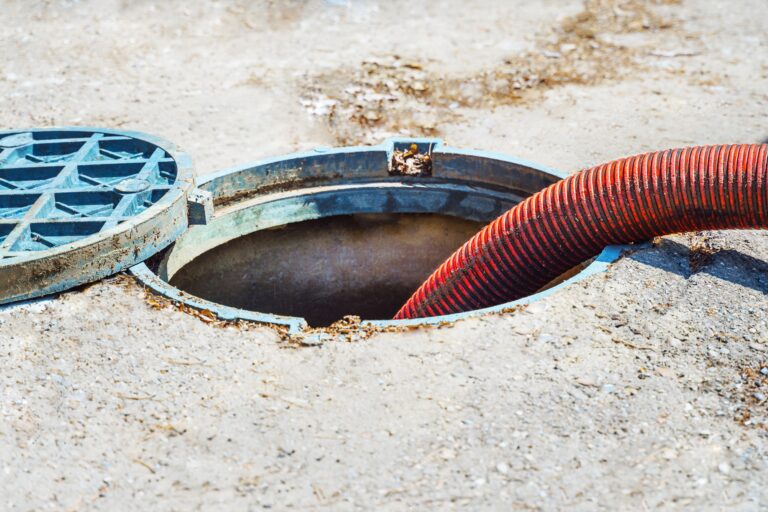Choosing the Right Hazardous Storage Containers
- Jonathan R.
- August 27, 2024
Table of Contents
Selecting the correct hazardous storage containers is essential for safety. This guide provides comprehensive information to help you make well-informed decisions. Keep reading to understand the different types, materials, and regulations to ensure the safe and effective storage of hazardous materials.
The Importance of Hazardous Storage Containers
Proper storage of hazardous materials is about more than compliance. It’s about ensuring safety. When these materials are not stored correctly, accidents can happen, leading to severe consequences.
Using the right hazardous storage containers minimizes risks and protects your employees and the environment.
Types of Hazardous Storage Containers
Choosing the right type of container depends on the nature of the hazardous material. Here are some common types:
Flammable Liquid Storage Cabinets
These cabinets are designed to store flammable liquids. They prevent accidental fires by containing spills and resisting ignition sources. Look for cabinets that meet OSHA and NFPA standards.
Corrosive Substance Containers
Corrosive substances require special containers that resist chemical reactions. Polyethylene and stainless steel are common materials used. Ensure the container material is compatible with the specific corrosive substance you are storing.
Toxic Substance Containers
For toxic substances, airtight and leak-proof containers are essential. These containers often have secure locking mechanisms to prevent unauthorized access and accidental exposure.
Combustible Material Storage
Combustible materials need storage solutions that minimize the risk of ignition. These containers should be placed in well-ventilated areas and away from heat sources.
Materials Used in Hazardous Storage Containers
The material of your storage container is crucial. Different hazardous substances require different materials. Here are some common materials used:
Polyethylene
Polyethylene is widely used for its chemical resistance. It’s ideal for storing acids, bases, and other corrosive substances. These containers are durable and resistant to many chemicals.
Stainless Steel
Stainless steel containers offer high durability and resistance to corrosion. They are perfect for storing flammable and combustible materials and are strong enough for harsh environments.
Carbon Steel
Carbon steel containers are solid and durable, making them suitable for storing flammable liquids. However, without a protective lining, they may not be ideal for corrosive substances.
Regulatory Standards for Hazardous Storage
Adhering to regulatory standards ensures safety and compliance. Here are vital standards to consider:
OSHA Standards
The Occupational Safety and Health Administration (OSHA) sets guidelines for hazardous material storage. Ensure your containers meet OSHA standards to avoid penalties and ensure workplace safety.
NFPA Standards
The National Fire Protection Association (NFPA) provides standards for fire safety. NFPA 30 is particularly relevant for storing flammable and combustible liquids. Complying with these standards reduces the risk of fire-related accidents.
EPA Regulations
The Environmental Protection Agency (EPA) regulates the storage of hazardous waste. Proper labeling, containment, and disposal methods are crucial for compliance with EPA regulations.
Best Practices for Hazardous Material Storage
Implementing best practices ensures maximum safety. Here are some tips:
Label Containers Clearly
Proper labeling is essential. Clearly label all hazardous storage containers with their contents and associated risks. This helps you identify the materials quickly in an emergency.
Regular Inspections
Conduct regular inspections of your storage containers. Check for signs of wear, leaks, or damage. Regular maintenance ensures that containers remain in good condition and continue to provide protection.
Training Employees
Training your employees on proper storage procedures is critical. Ensure they understand how to handle hazardous materials safely. Regular training sessions can prevent accidents and ensure compliance with regulations.
Proper Ventilation
Ensure your storage area has proper ventilation. This is especially important for flammable and combustible materials. Good ventilation reduces the risk of accidental ignition and exposure to harmful fumes.
Emergency Preparedness
Prepare for emergencies by having an action plan in place. Ensure that emergency equipment such as fire extinguishers and spill kits are readily available. Regular drills can help employees respond effectively in case of an incident.
Conclusion
Choosing the proper hazardous storage containers is essential for safety and compliance. Consider the type of material, regulatory standards, and best practices to ensure your storage solutions are effective. Proper storage protects your employees, environment, and business from potential hazards.
If you need help selecting the proper storage solutions, contact Safety Storage. Our experts can guide you through the process and provide the best containers for your needs.
Explore our range of hazardous storage containers today. Comment below with any questions, share this post with your colleagues, or visit our website to learn more about Safety Storage and how we can help you maintain a safe workplace.
Read More:
Hazardous Waste Storage Building

Jonathan Reed
Jonathan Reed specializes in writing in-depth, data-driven content on industrial waste management, regulatory compliance, and environmental sustainability. With expertise in hazardous waste disposal, OSHA guidelines, and waste reduction technologies, he provides actionable insights for businesses navigating complex waste management challenges.






